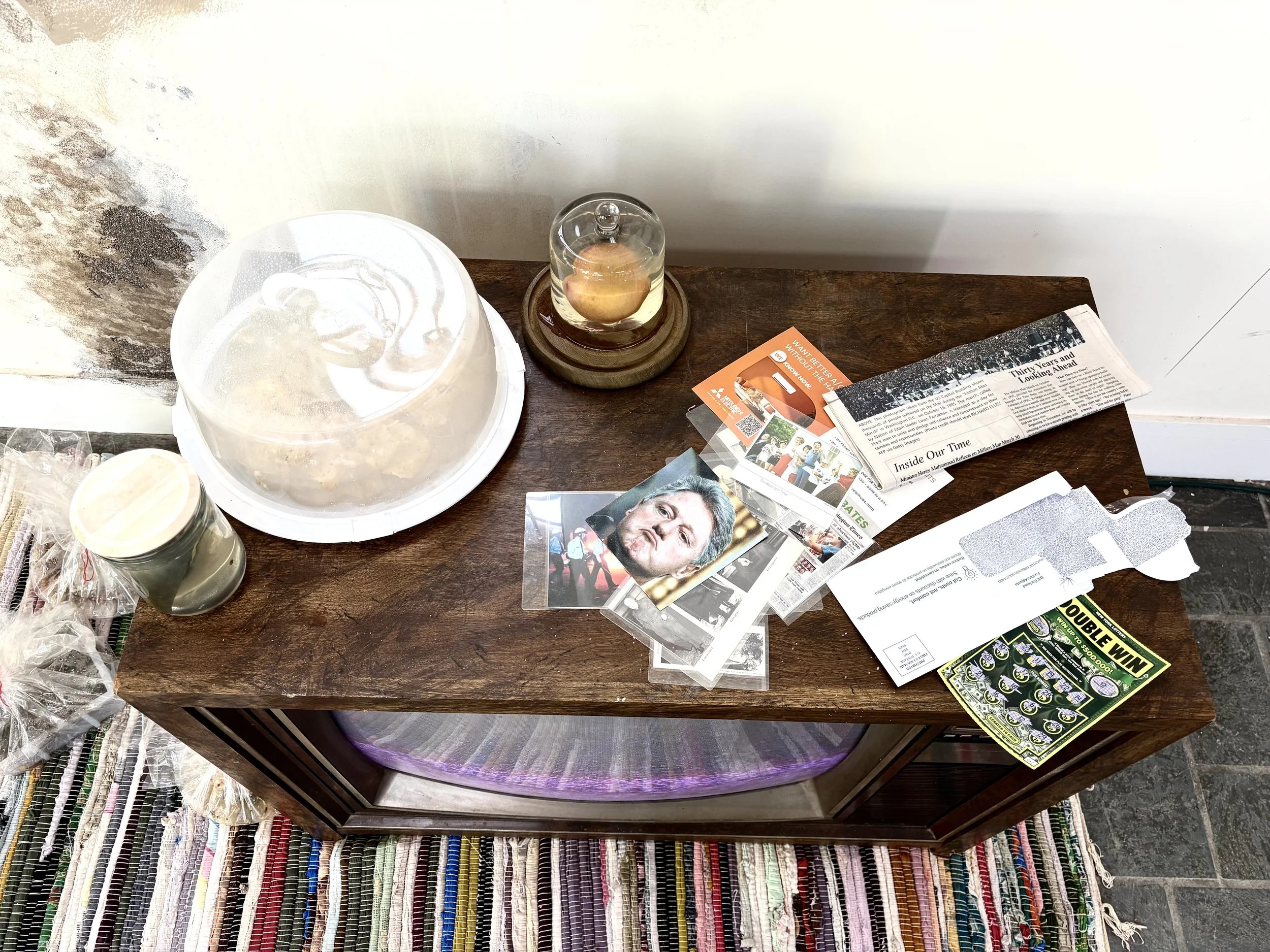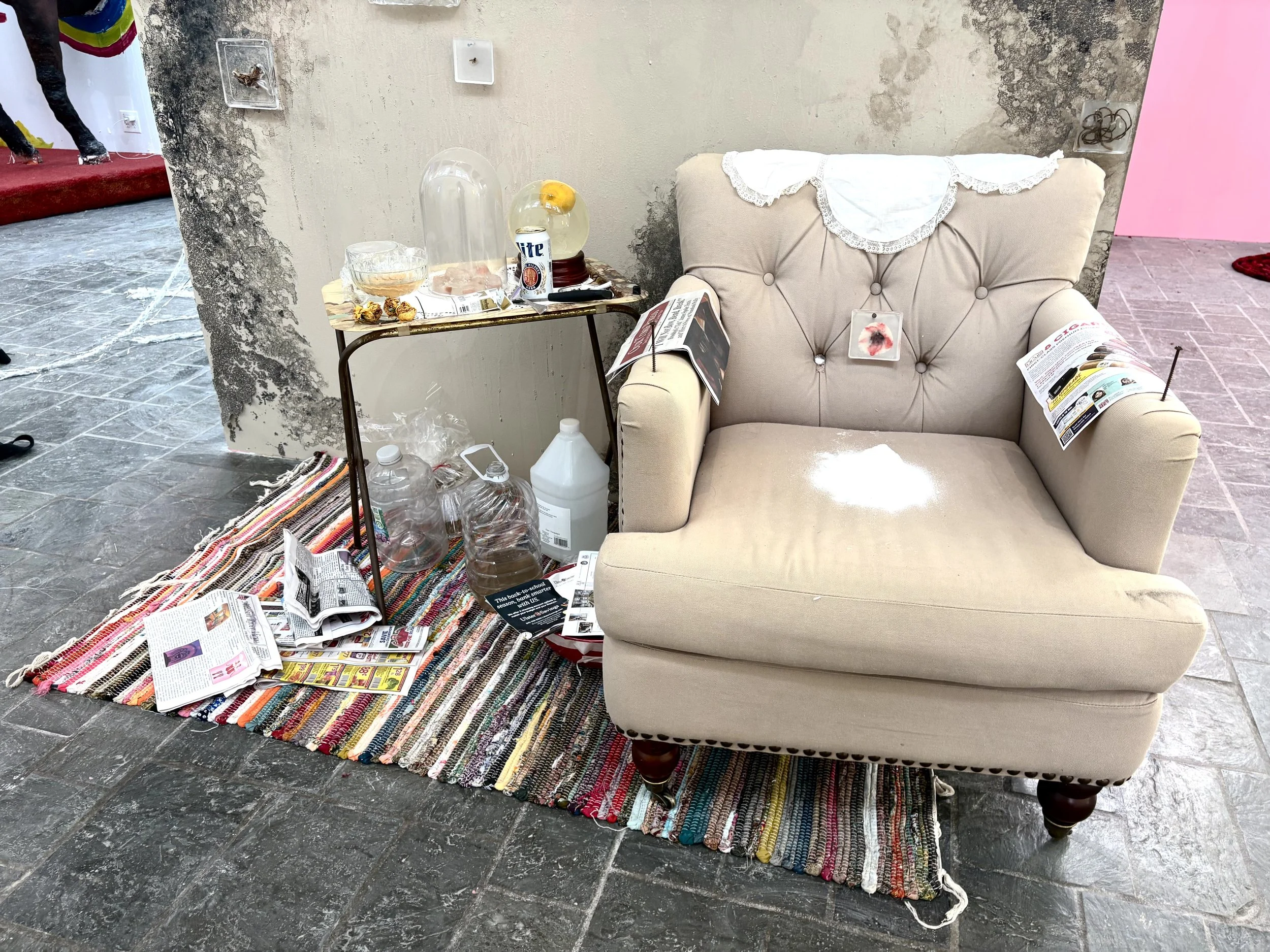Ninety-Seven Modern Highlight:
Charlotte Tampol - There One Day, Gone the Next, 2025
When I first saw There One Day, Gone the Next by Charlotte Tampol, my heart sank.
And that is not to say the work does not resonate; the work in fact, is a living, breathing depiction of grief, so tangible, that the reaction became both visceral and physical. Tampol has created an environment so forcibly instrewed with the nuances of navigating new realities, that individualized loss becomes an immersive destination.
Created at Bard College, the work is a living installation (literally) of life and death, perceived from those who continue on. The usage of biodegradable materials forces viewers to consider what the living continue to take for granted, in the atmosphere of a familiar and familial space. Right away, loss is apparent in the environment. We see an empty chair, a coat (lovingly placed on a hook), old newspapers, empty beer cans, and smoked cigarettes. The visualization of who once walked in, hung up their coat, sat in the chair (with a Miller Lite and a Marlboro Gold), emerges.
It could’ve been him. It could’ve been her. It could’ve been them.
However, being forced to contend with the gelatinous rot of foodscapes left about, creates a dichotomy of impermanence. We cannot love away loss. We cannot hold the fleeting. It is irresponsible to expect that what we hold dear, can stay, just for us, for the comfort of nourishment.
This understanding and depiction is a necessary contemporary work by Tampol, as a vivid reminder of the longevity of those we hold closest. There One Day, Gone the Next, actively serves as a reminder to the necessity of the artist in spaces of healing.
-Sierra R. Aguilar





From the artist:
There One Day, Gone the Next, is a piece born out of healing from loss. The artist, Charlotte Tampol, delves into her own experience with mourning and reconciliation of death through creating a tangible memory. Touching upon themes of neglect, decay, nostalgia, grief, mundanity, and presence, this immersive installation explores a collective experience of change and sorrow over what once was. It is the nostalgic melancholy of cleaning out your grandparents’ house after they pass away and experiencing the familiar through a new lens. Formally, Tampol’s use of gelatin and epoxy calls to the life span of material and matter. Through time and exposure, the gelatin breaks down and begins to decompose. The temporal quality of this medium brings a sense of life into the objects. One cannot escape this cycle; however, those who are aware of it have a fighting chance at making the most of their time here. The decomposition feeds organisms and bacteria, which are the building blocks of life itself. We consume the world around us as it consumes us; in other words, we exist in an ouroboros of consumption and capitalism that eats away at those who do not acknowledge it.
